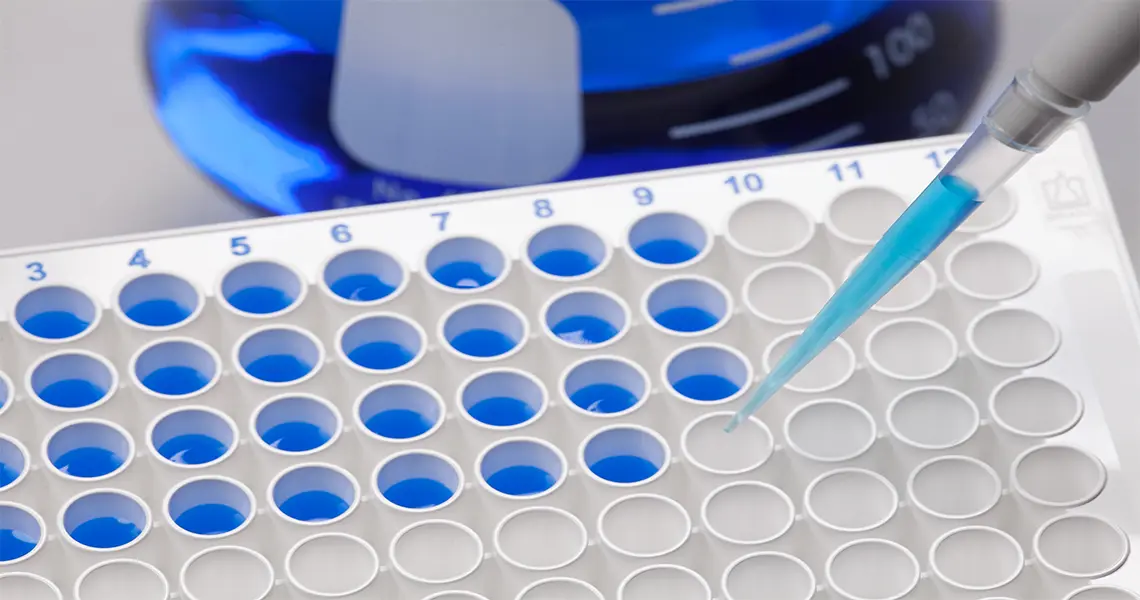
Pipettes serve as indispensable precision instruments in laboratory settings, facilitating accurate measurement and dispensing of liquids. To maximize their effectiveness and lifespan, it's imperative to adhere strictly to operational guidelines. Here are comprehensive instructions for prolonging the lifespan of pipettes:
Precise Volume Setting: Ensure precise volume adjustment by turning the scale clockwise when transitioning from a larger to a smaller range. Conversely, when adjusting from a smaller to a larger range, exceed the desired volume scale initially before dialing it back to the set volume to maintain precision.
Proper Pipette Tip Assembly: When attaching the pipette tip, insert it vertically into the nozzle, rotate it half a turn left and right, and then tighten it upwards. Avoid tapping the tip with the pipette, as this may loosen internal components and potentially jam the adjustment knob.
Correct Liquid Aspiration and Dispensing: Aspirate liquids vertically, submerging the tip approximately 3mm below the liquid surface. Pre-rinse the tip in the liquid before aspiration, and ensure slow aspiration and dispensing to minimize errors. For minimal volumes, ensure the tip contacts the container wall during dispensing.
Storage Considerations: Avoid laying pipettes containing liquid flat, as this can lead to internal contamination and spring corrosion. After each use, adjust the scale to the maximum to allow the spring to return to its original state, thus extending the pipette's lifespan.
Thumb Release Technique: When aspirating, release the thumb slowly and steadily to prevent rapid aspiration, which could potentially damage the pipette's piston due to corrosion.
Pre-Aspiration for Accuracy: For enhanced accuracy, pre-aspirate a sample solution into the tip before actual pipetting to prevent residue buildup on the inner wall, particularly with solutions like serum proteins or organic solvents.
Error Compensation for Viscous Liquids: Highly concentrated or viscous liquids may introduce errors. Experiment to determine error correction and use the adjustment knob to alter readings accordingly.
Calibration and Adjustment: Calibrate the pipette by weighing the volume of distilled water and calculating the correction factor. Remember, at 20°C, 1mL of distilled water weighs 0.9982g.
Display Window Visibility: Ensure the desired numerical value is clearly visible in the display window while setting the range. Avoid turning the knob beyond the range to prevent jamming the mechanical mechanism.
Avoidance of Harmful Substances: Refrain from using pipettes for aspirating volatile or highly corrosive liquids. Additionally, never blow to mix liquids with the pipette, as this can damage the instrument.
Appropriate Pipette Selection: Use pipettes with appropriate capacities for dispensing volumes to maintain accuracy. If dispensing volumes beyond the pipette's range is necessary, use a pipette tip for the operation.
In conclusion, it is imperative to adhere rigorously to these guidelines to guarantee precise and dependable outcomes, all while extending the longevity of pipettes. By following these protocols meticulously, laboratories can optimize their operations, ensuring efficiency, accuracy, and consistency in experimentation and analysis.
Next: Application and Function of Centrifuge Tubes
Previous: Pulse Biological News about Pipette Tips

